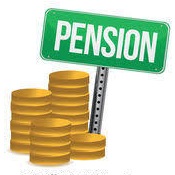 Defined benefit plans, also called pensions, are sometimes the most complicated and valuable assets in a divorce. In a pension, an employer provides payment(s) to an employee at retirement, usually as monthly payments that continue until the employee’s death.
Defined benefit plans, also called pensions, are sometimes the most complicated and valuable assets in a divorce. In a pension, an employer provides payment(s) to an employee at retirement, usually as monthly payments that continue until the employee’s death.
Pension plans have a trust fund for all employees who participate in the plan. Each plan participant is guaranteed a certain benefit determined by a formula. The formula takes into account your length of service and your age and salary at the time of retirement.
Pension plans will often provide statements showing the total amount you’ve contributed toward the plan. These are sometimes mistakenly understood as expressing the value of the pension. In fact, the value of the pension is much greater than the amount the employee has contributed.
Present Value of Pensions
If you or your spouse has a pension, you can’t tell from its statements just how much the plan is worth in today’s dollars. That’s because it’s designed to pay out in the future. Inflation causes today’s dollars to have more value than they’ll have down the road. A financial expert, called an actuary, can calculate the current value of a pension based on certain information and standard assumptions. The cost of this analysis is roughly $200 per pension.
Normally, as part of the analysis, the actuary will also calculate for you the community property interest (if any) and the separate property (non-marital) interest (if any) in the pension.
In a divorce, it’s standard practice to obtain a present value for each pension. Otherwise, how can you stack up the value of the pension against the other assets? About the only good reasons for not obtaining a pension’s current value are:
- its value is certain to be very small or
- you have agreed to split the community property interest in the pension exactly 50/50.
If your divorce ends up in court, the “legal” value for the pension will be the current value provided by the actuary. Note, however, that the legal value does not take into account federal and state income tax that will have to be paid on the pension income received. The actuary’s present value calculation doesn’t take this into account either.
Dividing Pensions – Time Rule
When dividing the community property interest in pension plans, the court most often uses the “Time Rule.” This is also normally used in the actuary’s analysis. The time rule is based on the number of employee “service” years that occurred during marriage and the number that occurred outside of the marriage. The marital period is the date of marriage through the date of separation.
Let’s say for a given pension, the employee spouse had 10 service years during marriage and 5 service years before marriage. The total years of service is 15 years. According to the time rule, 5 divided by 15 (one-third) of the pension is the separate property of the employee. And 10 divided by 15 (two-thirds) of the pension is community property. Since each spouse is entitled under California law to half of the community property of the marriage, the non-employee spouse would be entitled to one-third of the pension (half of the two-thirds that is community property).
If for some reason, using the time rule would give an unfair result, the time rule does not have to be used. An example might be if the division implied by the time rule doesn’t reasonably reflect when the pension was actually earned.
It may take a certain number of years to become fully vested in (entitled to) the pension. If you are not fully vested, California law considers non-vested retirement benefits to be community property.
It’s becoming common for an employee spouse to decide not to retire at their retirement age. When this happens, the law says that the non-employee spouse is still entitled to receive their community property portion of the employee spouse’s retirement benefits when the employee spouse reaches retirement age.
QDROs
Pensions can’t be divided without a QDRO or equivalent court order. The QDRO spells out exactly how a pension is to be divided by the pension plan administrator. Each pension to be divided requires its own QDRO. Each QDRO that you need in a divorce is an extra cost. This cost is usually between $500 and $1500, depending on the QDRO preparer.
If each spouse is going to receive pay-outs from the pension, make sure that the QDRO directs the plan administrator to send separate checks to each spouse. Then each spouse is responsible to pay their own taxes on the income they receive from the pension.








Very informative! I may need a new actuarial. Meeting with ex and her lawyer Monday.
Thanks! If you’d like a referral to an actuary, I can give you a couple.
Could I please get referrals to actuaries? Thank you.
Answer provided by phone